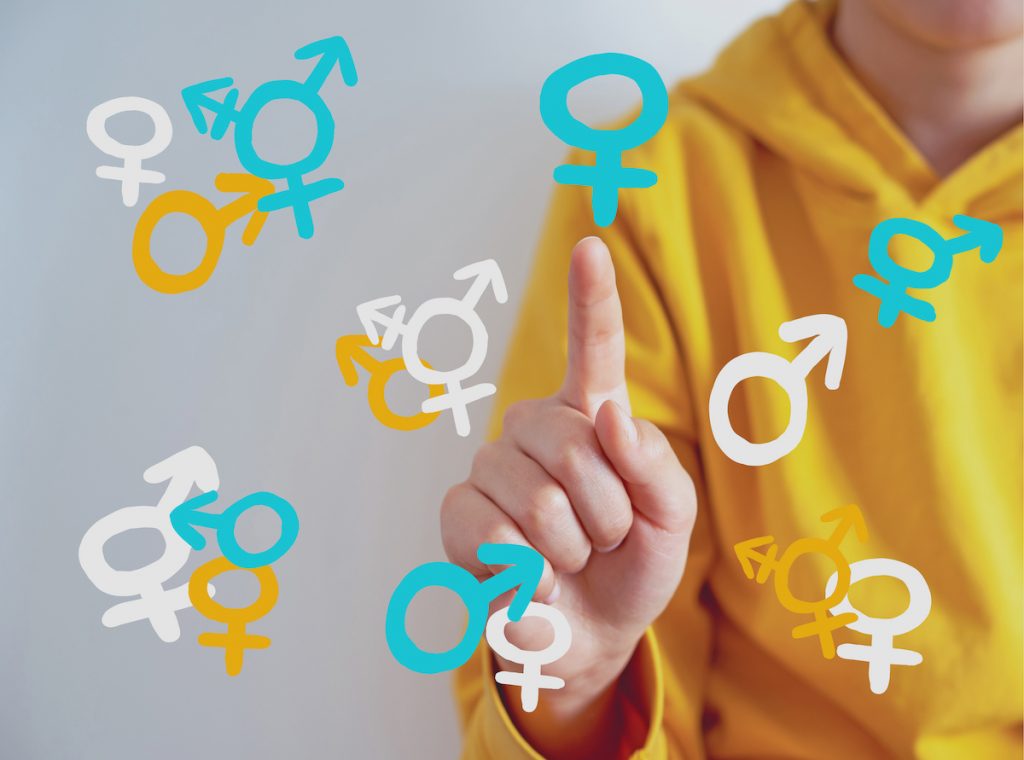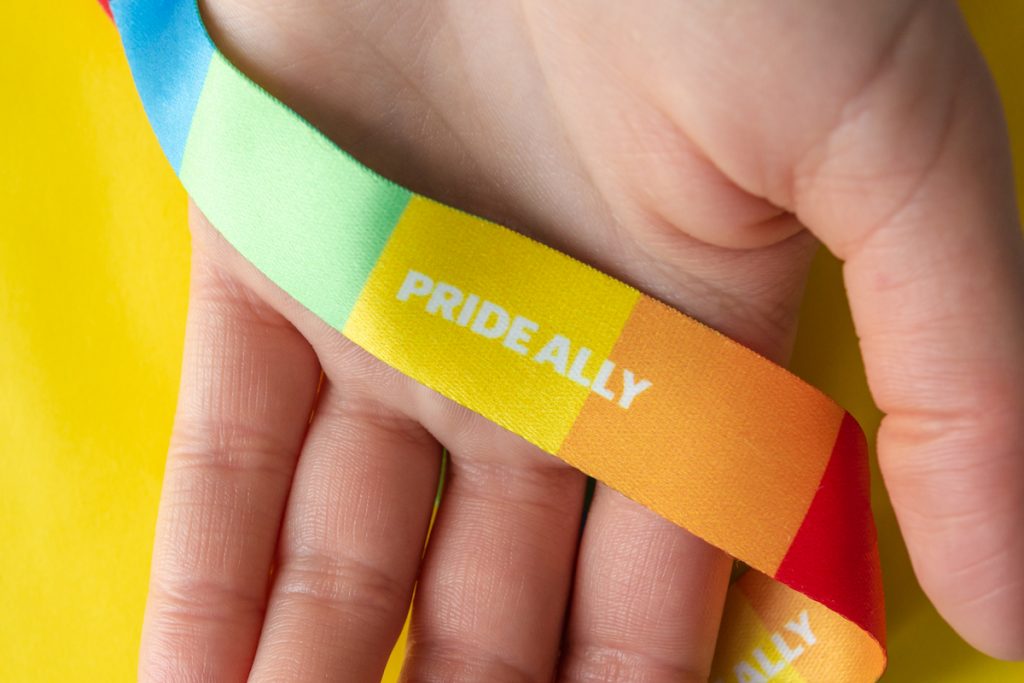Minority stress idea poses that minoritised people expertise distinctive and hostile stressors resulting from their minority standing, resembling their sexuality and gender id (Meyer, 2003). This idea aligns with the expertise of people whose gender doesn’t correspond with their intercourse registered at beginning. This group contains (however will not be restricted to) trans and non-binary people, in addition to these whose gender is fluid or are not sure of their gender. These people are at increased danger for psychological well being difficulties, partially resulting from gender dysphoria. That is the extraordinary psychological discomfort that’s related to the incongruence between intercourse at beginning and gender. Consequently, coping methods could also be used, together with (extreme) alcohol consumption.
In earlier research, associations between minority stressors and unsafe consuming have been reported in numerous sexual minority teams. A optimistic affiliation has been discovered between hazardous alcohol consuming and sexual victimisation (Hughes et al., 2010), sexual and bodily violence (Drabble et al., 2013), and minority stress (Mason et al., 2016) amongst sexual minority girls. Nevertheless, consuming behaviours in trans and non-binary individuals may additionally serve a optimistic perform, as nightlife performs an essential position in exploration, celebration and acceptance of id in trans and non-binary people, making the motives of alcohol use essential for figuring out its results on psychological well being and functioning.
To handle this present hole within the literature, a current research by Davies et al., (2023) explores the connection between alcohol consumption, consuming motives, alcohol harms and danger elements resembling discrimination and misery in a UK pattern of non-binary and trans people.

Hazardous consuming behaviours have been related to distinctive stressors reported in sexually minoritised teams.
Strategies
The researchers carried out a web based cross-sectional survey research utilizing Qualtrics software program. Contributors needed to be not less than 18 years outdated, primarily based within the UK, have a historical past of alcohol use, and determine as trans, non-binary, genderqueer, or gender non-conforming. The next end result measures have been collected:
- Demographics together with age, location, ethnicity, gender, gender id, intercourse registered at beginning, pronouns, sexual orientation, training, and employment.
- Knowledge on alcohol-related harms to evaluate the chance of dependence and skilled harms have been measured by two questionnaires. The Alcohol Use Issues Identification Check (AUDIT), was used as a screening instrument to measure the chance of hazardous, dangerous, and dependent alcohol. 13 particular alcohol-related harms have been measured together with lacking work or research, taking extra sexual dangers than typical, being sick, and embarrassed.
- Gender dysphoria with the usage of the Transgender Congruence Scale to measure the congruence between present gender expression and desired gender.
- Discrimination, gender minority stress and misery have been measured by a seven-item scale (Arayasirikul et al., 2017) particularly for a trans and non-binary pattern.
- Present ranges of psychological misery have been measured by the six-item Kessler scale.
- Loneliness was measured by the three-item UCLA loneliness scale, the place a better rating indicated a better loneliness.
- To evaluate consuming motives, the revised consuming motives questionnaire (DMQ-R) was used. This scale contains 4 dimensions: conformity (damaging/exterior), coping (damaging/inner), enhancement (optimistic/inner), and social (optimistic/exterior). Two extra motives have been added to the record by the advisory group: ‘How usually do you drink to handle your gender dysphoria?’ and ‘How usually do you drink to have intercourse?’
Importantly, resulting from the potential for people choosing a number of identities, some classes had restricted illustration. As suggested by the research’s neighborhood advisory group, responses have been consolidated into 5 classes: man solely, girl solely, non-binary and/or genderqueer, different gender id, and a number of gender identities, excluding non-binary and genderqueer people represented within the third class.
Gender variations have been in contrast utilizing ANOVA. Subsequently Pearson correlations explored relationships between measures, and regression fashions with the whole pattern predicting AUDIT scores, and harms. Vital predictors have been consuming motives, discrimination, psychological misery, and consuming behaviors associated to gender dysphoria and sexual exercise, with mediation evaluation suggesting a possible position of consuming motives in mediating the connection between discrimination and AUDIT.
Outcomes
A complete of 462 individuals have been included, of which 159 individuals recognized as non-binary and/or genderqueer, 135 solely as girls, 63 solely as males, 15 as one other gender id, and 90 individuals chosen a number of gender identities. The age vary was 18 – 76, though 30% of the respondents didn’t enter their age. 91.3% of the pattern reported being white.
Vital variations have been discovered between gender teams for AUDIT scores, and gender congruence. Males had increased AUDIT scores in comparison with girls and people with a number of gender identities. Contributors figuring out as non-binary and/or genderqueer reported considerably decrease experiences of discrimination.
These figuring out as non-binary and/or genderqueer, in addition to these with different gender identities, reported decrease complete gender congruence scores in comparison with males or girls. AUDIT scores have been considerably positively correlated with all different measures besides social and conformity motives. Thus, as AUDIT scores elevated, so did the scores on measures like discrimination, gender congruence.
The strongest correlations between the result variables, AUDIT scores and harms, and experiences of discrimination have been noticed in males. Coping motives, enhancement motives, and consuming to handle gender dysphoria have been recognized as important contributors. These elements had a notable affect on explaining the variance in AUDIT scores. Among the many contributors, coping motives emerged as probably the most influential predictor within the mannequin. Moreover, social motives emerged as a outstanding predictor of alcohol-related harms.

People solely figuring out as males skilled stronger optimistic results of discrimination on dangerous alcohol consuming in comparison with different gender identities.
Conclusions
The research discovered that when individuals skilled extra discrimination, they tended to have increased scores on the AUDIT, and reported extra damaging results from consuming. The hyperlink between discrimination and alcohol use was mediated through the use of alcohol to manage and handle dysphoria. Moreover, the connection between discrimination and damaging results from consuming was influenced by coping motives, managing dysphoria with alcohol, and consuming for sexual causes.

Excessive coping and gender dysphoria strengthen the optimistic impact of discrimination on dangerous alcohol consuming in the whole pattern.
Strengths and limitations
A singular energy of this research was the co-production with an Knowledgeable by Expertise (EbE) group of trans and non-binary individuals who reported present or historic alcohol use, who have been rewarded for his or her involvement within the mission. All through the whole strategy of the event, execution, and writing up of the research, the group was consulted to make sure maximal inclusivity and all suggestions was included into the research. That is mirrored by the rigorously tailored questionnaires that guarantee inclusivity and study constructs which are clinically related for these people. The group members have been included as co-authors in related manuscripts. As a reader, the outline of the EbE involvement helps to know the character of co-production and appreciation of consultants. As well as, the research was preregistered on the Open Science Framework, which is sweet scientific apply and signifies transparency and replicability of the research.
One of many principal limitations of this research is its cross-sectional nature, making it unimaginable to conclude if one thing is a danger issue. Furthermore, a couple of essential confounders should not assessed, resembling different drug use, which is thought to be related hazardous consuming behaviours. A giant proportion of the pattern reported having a number of gender identities, and the analysis crew collapsed these people into principal classes to permit for the statistical analyses. Though this was an motion agreed in session with the EbE advisory group, it will have been fascinating to have extra info on the reasoning behind the categorisation, in addition to if and why this may occasionally have an effect on interpretation of the outcomes and implications of the research given the nuances in sexual orientation and gender id. Lastly, reporting may have been clearer regarding the methodology and outcomes sections, because the variety of members reported differs and no reasoning is supplied by the authors.

This research affords a very good instance of significant involvement of specialists by expertise throughout all analysis phases.
Implications for apply
Substance use and the psychological well being penalties in trans and non-binary people is at the moment nonetheless understudied, though these people are at elevated danger of psychological diseases. This research highlights that alcohol use is elevated on this neighborhood, and is related to danger elements, utilizing patterns and motives of alcohol use differ primarily based on gender.
Clinicians working with non-binary and trans individuals must be conscious that the healthcare system continues to be predominantly designed to account for the wants of cis women and men, which may result in additional misery in queer folks. Efforts to enhance this embrace, however should not restricted to, increasing administration varieties to not solely embrace male/feminine, utilizing appropriate pronouns in each medical paperwork (i.e., letters) and remedy, and giving service customers the flexibility and energy to vary their title within the medical information in the event that they want to. Clinicians want to interact in coaching to know the wants of LGBTQ+ neighborhood and the way these wants might differ from their cis-gender and heterosexual counterparts, in addition to why their psychological well being outcomes might differ. The familiarisation with the proof base and newest analysis on LGBTQ+ psychological well being is essential in day-to-day medical apply to permit the appliance of tailor-made approaches in remedy. This research exhibits that hazardous consuming is influenced by psychological well being difficulties, resembling gender dysphoria and coping, and could be formulated and understood inside the wider context of minority stress idea. Rising security and inclusivity in healthcare settings must be prioritised.
The authors have printed one other research as a part of this mission exploring alcohol discount, and located that individuals wish to have entry to self-help interventions, but additionally expressed curiosity in tailor-made alcohol discount companies and inclusivity within the healthcare settings (Connolly et al., 2023). Additional analysis must be carried out to know boundaries and facilitators looking for assist for alcohol administration and therapeutic interventions.

We have to prioritise psychoeducation, coaching and affirmative care within the healthcare system to enhance the psychological well being of trans and non-binary individuals.
Hyperlinks
Major paper
Davies, E. L., Ezquerra-Romano, I., Thayne, B., Holloway, Z., Bayliss, J., O’Callaghan, S., & Connolly, D. J. (2023). Discrimination, gender dysphoria, drinking to cope, and alcohol harms in the UK trans and non-binary community. Alcohol and alcoholism (Oxford, Oxfordshire), agad060. Advance on-line publication.
Different references
Arayasirikul, S., Wilson, E. C., & Raymond, H. F. (2017). Examining the Effects of Transphobic Discrimination and Race on HIV Risk Among Transwomen in San Francisco. AIDS and conduct, 21(9), 2628–2633.
Connolly, D. J., Thayne, B., Bayliss, J., Hughes, X., Holloway, Z., O’Callaghan, S., & Davies, E. (2024). Transgender and non-binary people’s experiences with alcohol reduction in the UK: A cross-sectional study. Journal of Substance Use and Dependancy Therapy, 158, 209246.
Drabble, L., Trocki, Ok. F., Hughes, T. L., Korcha, R. A., & Lown, A. E. (2013). Sexual orientation differences in the relationship between victimization and hazardous drinking among women in the National Alcohol Survey. Psychology of addictive behaviors, 27(3), 639.
Hughes, T. L., Szalacha, L. A., Johnson, T. P., Kinnison, Ok. E., Wilsnack, S. C., & Cho, Y., . Sexual victimization and hazardous drinking among heterosexual and sexual minority women. Addictive behaviors, 35, 12, 2010, 1152-1156.
Mason, T. B., Lewis, R. J., Gargurevich, M., & Kelley, M. L., . Minority stress and intimate partner violence perpetration among lesbians: Negative affect, hazardous drinking, and intrusiveness as mediators. Psychology of sexual orientation and gender variety, 3, 2, 2016, 236.
Meyer, I. H. (2003). Prejudice, social stress, and mental health in lesbian, gay, and bisexual populations: conceptual issues and research evidence. Psychological bulletin, 129(5), 674.

